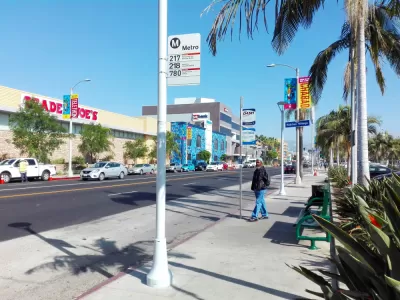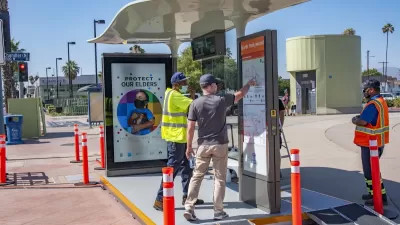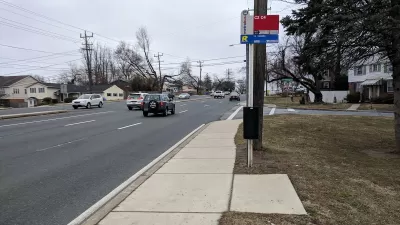As heat waves intensify, bus riders in Los Angeles are forced to wait at bus stops that offer little shade or seating, putting vulnerable residents at risk of heat stroke and other health impacts.

According to an article by Rachel Uranga in the Los Angeles Times, “Of the 12,200 bus stops served by the Los Angeles County Metropolitan Transportation Authority, only a quarter have some kind of shade or rain shelter, and only half have a seat for those waiting.”
As heat waves become increasingly deadly, Uranga asks, when will L.A. bus riders finally have adequate facilities to protect them while they wait for the city’s (often late) buses?
“While the average trip on a Metro bus is less than five miles, about half the time of that journey is spent looking down the road for signs of a bus.” As Uranga points out, “The searing weather is yet another setback for largely low-income bus riders who often face long, difficult commutes.” The city is working on a contract to add more shelters to bus stops in its jurisdiction, but the project could take years.
While Los Angeles may be known for historically mild weather, those days are essentially over. Juan Matute, deputy director of the UCLA Institute of Transportation Studies, says “Climate change is changing the baseline of all these past decisions.” To protect vulnerable residents, “Transit advocates say the agencies need to look to desert cities like Phoenix, where bus stop canopies equipped with misters and fans to cool riders have been installed.”
FULL STORY: Heat waves are getting worse. When will L.A. get around to offering bus riders more shade?

Alabama: Trump Terminates Settlements for Black Communities Harmed By Raw Sewage
Trump deemed the landmark civil rights agreement “illegal DEI and environmental justice policy.”

Study: Maui’s Plan to Convert Vacation Rentals to Long-Term Housing Could Cause Nearly $1 Billion Economic Loss
The plan would reduce visitor accommodation by 25% resulting in 1,900 jobs lost.

Planetizen Federal Action Tracker
A weekly monitor of how Trump’s orders and actions are impacting planners and planning in America.

Waymo Gets Permission to Map SF’s Market Street
If allowed to operate on the traffic-restricted street, Waymo’s autonomous taxis would have a leg up over ride-hailing competitors — and counter the city’s efforts to grow bike and pedestrian on the thoroughfare.

Parklet Symposium Highlights the Success of Shared Spaces
Parklets got a boost during the Covid-19 pandemic, when the concept was translated to outdoor dining programs that offered restaurants a lifeline during the shutdown.

Federal Homelessness Agency Places Entire Staff on Leave
The U.S. Interagency Council on Homelessness is the only federal agency dedicated to preventing and ending homelessness.
Urban Design for Planners 1: Software Tools
This six-course series explores essential urban design concepts using open source software and equips planners with the tools they need to participate fully in the urban design process.
Planning for Universal Design
Learn the tools for implementing Universal Design in planning regulations.
Caltrans
Smith Gee Studio
Institute for Housing and Urban Development Studies (IHS)
City of Grandview
Harvard GSD Executive Education
Toledo-Lucas County Plan Commissions
Salt Lake City
NYU Wagner Graduate School of Public Service





























